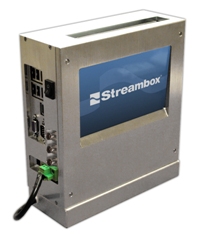A New Tune For One-Man Bands

AS BROADCASTERS deliver more content across broadband platforms, they are also increasingly looking to use Internet Protocol (IP)-based transport as a way to bring video from the field back to the studio, either for live streaming coverage on their Websites or for inclusion in on-air newscasts.
Cable networks and enterprising stations have used video-enabled smartphones, Inmarsat’s BGAN (Broadband Global Area Network) broadband satellite service and Skype videoconferencing for years to deliver low-resolution video when a traditional satellite or microwave link isn’t technically or financially feasible. The latest trend in IP-based newsgathering is taking 3G and new 4G wireless data cards from multiple carriers and bonding them to increase the throughput and quality of service.
Several streaming specialists, including Livestream, Streambox and VBrick, have developed such cellular bonding technology and packaged it with an encoder in a complete portable device. These systems are perfectly suited to the new “backpack journalism” model sweeping station groups like Gannett and Hearst, where one-man-band reporters are sent into the field with a handheld camcorder and laptop to shoot, report and edit stories.
For example, Streambox’s new Avenir product has an HD-SDI video input and can combine four 3G/4G wireless data cards in a device that fits in a backpack. Avenir will ship in June and list for around $15,000. It can achieve a total throughput of up to 20 megabits per second over cellular networks, claims Streambox “applications evangelist” Ben Larson, good enough to transmit HD video in either the 1080-line interlace or 720-line-progressive HD formats.
The latest entrant in the IP backhaul space is San Diego-based Mushroom Networks, a venturebacked firm founded by University of California-San Diego professor Rene Cruz. Mushroom Networks has sold broadband bonding systems for several years to enterprise customers looking to speed up their data flow by combining multiple Internet access lines. It is now focusing on the broadcast space with TelePorter, a new product that can combine four to eight cellular data cards from multiple carriers and transmit H.264-compressed video at bitrates of 2 Mbps and up.
TelePorter uses a new modeling technique developed by Cruz called Network Calculus. According to Mushroom Networks CEO Cahit Akin, it accounts for variations in cellular networks and delivers higher quality of service and lower latency than other bonding technologies. Though he won’t give details, Akin says TelePorter is priced similarly to other portable IP streaming units, and has already been adopted by several U.S. and European broadcasters.
TelePorter weighs about five pounds, including an Anton Bauer battery, and is supported by a 1-rack-unit receive device installed at the station. It features S-video, composite video and XLR audio inputs for connecting directly to a camera, and can begin streaming at the push of a button.
As Akin says: “For the photographer in the field, we think the best user interface is no interface.”
Broadcasting & Cable Newsletter
The smarter way to stay on top of broadcasting and cable industry. Sign up below










